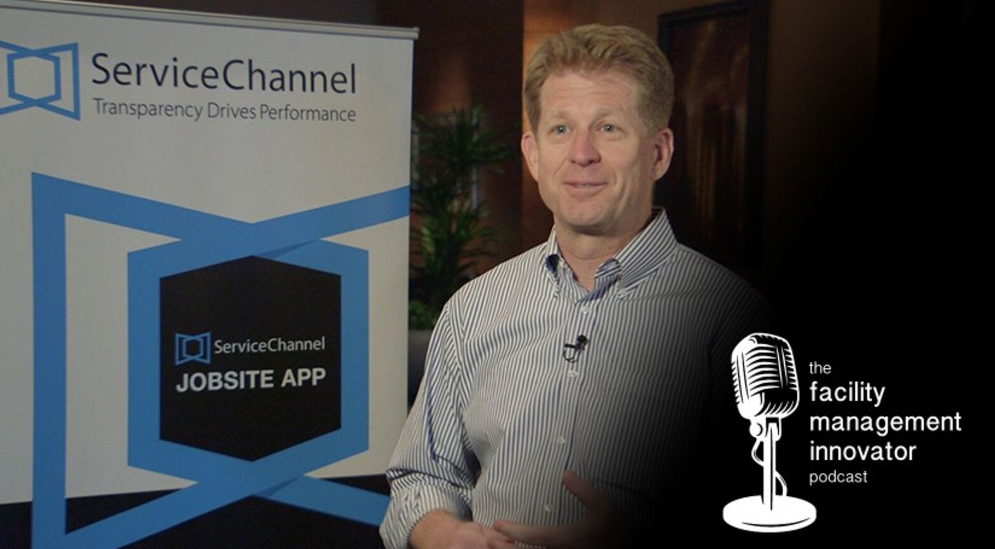Refining the Asset Management Process for Maximum ROI
The COVID-19 pandemic has changed everything about the way we live and work – and, in turn, it has radically changed the ways consumers shop, exercise, and dine out. ServiceChannel is committed to helping our customers through this difficult time in any way we can. Please do not hesitate to reach out with any questions or concerns at [email protected].
Asset management is a critical function of any facilities professional’s role. Doing so actively – by intervening with repair and maintenance activities at strategic points and using data to inform decision-making processes – is the key to achieving operational efficiency. The longer an asset can be maintained at optimal performance, the higher the potential for savings and long-term reduction of overhead costs. In other words, proactive asset management leads to better ROI.
Yet many facility managers fail to close the loop on asset management, intervening only when a particular piece of equipment fails or requires maintenance in order to pass a mandatory inspection. In order to truly maximize efficiency, asset management must be seen as a circular process: A sequence of activities and tasks that are designed to achieve specific goals and objectives throughout each stage of the asset lifecycle.
As noted in a recent report by Gartner, “proper processes provide control, consistency, and accuracy.” By recognizing asset management as a process, organizations can ‘zoom out’ on their catalog of assets and understand their value and function holistically – making it easier to determine how often to invest in repairs, how much to spend annually, and when it’s time to invest in a newer model. This simplifies the FM budget planning process and enables strategic preventive maintenance, while simultaneously reducing liabilities.
Let’s take a closer look at the asset management process and how to leverage today’s technology to optimize and streamline each phase.
What is Asset Management?
Asset management is defined as the process of coordinating and planning for the acquisition, operation, maintenance, renewal, and disposal of organizational assets. Assets may be technological (IT assets) or physical, but most FM programs focus on the latter. Proper asset maintenance involves the proactive deployment of systems, people, and processes to ensure a positive enhancement of capital over the course of the asset lifecycle.
Why is asset management so important? First and foremost, it provides businesses with a bird’s eye view over everything they own or lease across facilities, including details such as asset condition, age, location, performance, warranty status, and repair and maintenance history. By taking inventory of assets and recording this information in a centralized database, organizations can better determine how to minimize costs and keep vital equipment running properly for as long as possible.
On the other hand, when assets fail, it can have a significant impact on the customer experience. Without a strategic asset management program in place, businesses risk frequent bouts of unexpected downtime. If a water pump malfunctions at a restaurant, for example, it can completely halt an evening’s dinner service – sending disappointed patrons home hungry.
When assets are properly maintained, businesses will increase ROI simply by extending the life of the equipment they invest in and eliminating duplicate costs, unnecessary purchases, and maintenance overspend. In fact, digitally-driven and optimized asset management systems may even recoup or reverse costs associated with fixed asset management. The key is taking a hard look at your data and revisiting this information frequently during each phase of the asset management process.
Phases of the Asset Management Process
In order to implement strategic asset management programs that facilitate long-term growth and ROI, organizations must shift their thinking from the old fashioned, “if it isn’t broken, don’t fix it” school of thought to a more modernized, process-based approach. As such, asset management shouldn’t be limited to the post-installation, pre-replacement timeframe: In reality, the asset management process encompasses multiple phases, beginning with planning and acquisition and extending all the way out to retirement.
Planning & Acquisition
How much strategic planning takes place when your organization realizes the need to replace an asset or acquire a new one? In most cases, it’s very little. You’ll take a look at your budget, briefly consider the performance requirements of the asset, and move forward with a purchase.
This simplified mode of acquisition may work out for smaller investments, such as a new sound system or outdoor signage at a single retail location. For larger, more critical investments, recognize that the operating costs of an asset will typically outweigh the initial purchase price many times over.
During the planning phase, consider all of the costs related to staff training, maintenance, operation, withdrawal from service, depreciation, disposal, renewal and rehabilitation of an asset. Think about a commercial refrigeration system: It requires daily temperature checks and weekly cleaning, quarterly servicing, regular inspections for leakage (which can lead to hefty fines if not addressed), and a complex disposal process upon retirement. These costs are not insignificant.
When conducting asset planning, organizations should ask themselves a few key questions. First, how are the asset’s service requirements defined by the facilities program? How can service levels be measured and what is the minimum acceptable condition of the asset in order to uphold these standards? Second, it’s smart to address future demands. Will there be any change of service expectations? Is the asset robust enough to deliver for these?
At the most basic level, careful asset planning can help an organization decide whether it actually needs to purchase an item – and, if so, whether to purchase, lease or hire it. When defining service levels, FMs should take into account the potential consequences of failure and minimum condition grade, both of which will contribute to the asset’s criticality ranking. Establishing such rankings will help justify higher maintenance costs and contribute to long-term projected ROI.
Operation
The operational phase is an asset’s longest and most useful period. This phase includes the tagging and cataloging of the asset, the delivery of services to support core business requirements, and the planning and structuring of proactive asset management activities such as preventive maintenance.
How long does the operational phase last? Obviously, it varies from one asset to another. As long as the asset is functioning correctly and fulfilling its service requirements, it is within its useful life – regardless of when you expected it to reach the end of the life cycle. As soon as the asset is no longer meeting its minimum service requirements and cannot be repaired, it has reached the end of its useful life and will require retirement and disposal.
Once an asset is acquired, it should immediately be tagged and placed into a digital asset register – a centralized database containing all pertinent and relevant information about the asset’s performance, maintenance, and inspection requirements. This serves as a record for insurance and auditors as well as a means to simplify the ongoing maintenance process. Most CMMS and service automation platforms feature built-in asset management capabilities that simplify the asset tagging and registration process.
Asset tagging technology typically uses NFC (such as RFID) and QR barcode scanning capabilities to help facilities professionals easily create an asset inventory or register. When an asset needs to be reviewed or serviced, important information can be quickly accessed by scanning the tag from a mobile device – streamlining the work order creation process and making it easier to keep asset data up to date.
Maintenance
Deliberate preventive maintenance is at the heart of asset management. Executed correctly, a preventive maintenance schedule will both prolong the life of an asset and keep maintenance spending low, contributing to a greater degree of operational efficiency. The goal of the maintenance phase, in other words, is to keep assets within the operational phase for as long as possible.
A well-thought-out maintenance plan takes into consideration the cost of equipment downtime as it compares to the cost of routine maintenance or emergency repairs. Ideally, if an asset such as an HVAC unit is serviced kept clean and serviced quarterly, emergency breakdowns can be avoided altogether. It is this type of unexpected failure that tends to be the most expensive, both in terms of brand uptime and actual costs of labor.
Using a data-driven asset management platform, facilities professionals can better ascertain how much to spend on maintenance for a particular asset per year. Would, for instance, spending 10 to 15 percent more each year ultimately double the asset’s lifespan? If so, then it’s probably worth the investment. Most platforms also feature warranty tracking, which takes covered services and repairs into consideration as a part of the long-term maintenance equation.
When working under tight budgets, it may be helpful to set a criticality scale for various types of maintenance activities. If a low priority request, scored at 0-1, comes in around the same time as a high priority request, scored at 9-10, the available funding should obviously go to the latter. A scoring system will help FMs track and monitor urgent jobs and make informed decisions around when to repair versus replace.
Retirement & Disposal
All assets will eventually hit the end of their lifespan, becoming no longer capable of fulfilling minimum service requirements even after repairs. In some cases, an assert may be repairable but to do so would be a waste because the repairs would be costlier than replacing the asset altogether. This is why it’s so important to track asset depreciation at regular intervals, while also keeping an eye on existing asset performance versus the potential performance of a brand new replacement.
When an asset is eventually retired and disposed of, FMs must be sure to remove the asset from the register and notate how it was disposed (such as a sale, for instance) along with any residual value.
Final Thoughts
A strategic asset management program will deliver significant financial and performance improvements to an organization, while also streamlining day-to-day responsibilities. Yet all too often, certain parts of the asset management process are given insufficient attention. Today’s facilities professionals must be sure to prioritize not only maintenance, but the asset planning, acquisition, operational, and retirement phases, as well.
Of course, technology plays a key role throughout the asset management process, automating everything from tracking locations and recording pertinent information to managing the maintenance cycle and keeping tabs on warranties. A digital facilities management platform should be considered the status quo for organizations looking to improve ROI of their physical assets and gain a competitive edge. After all, it’s hard to visualize each phase of an asset’s life cycle without referring to data – and no good decisions were ever made blind.



